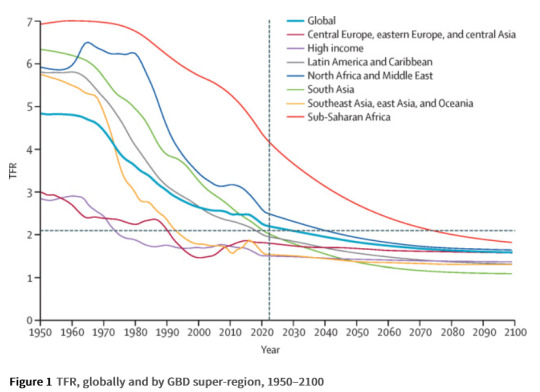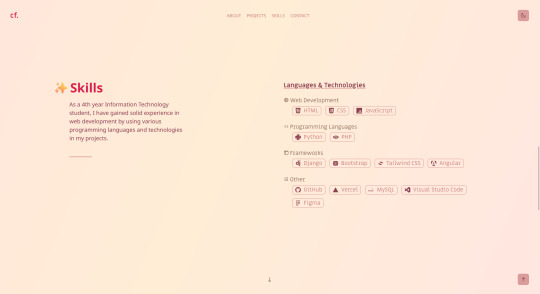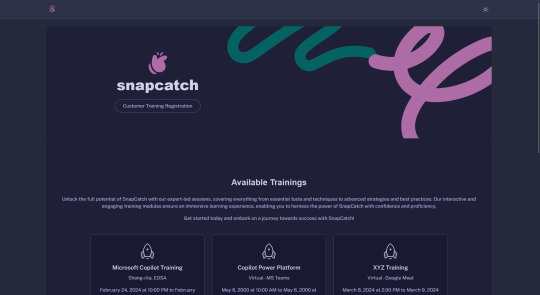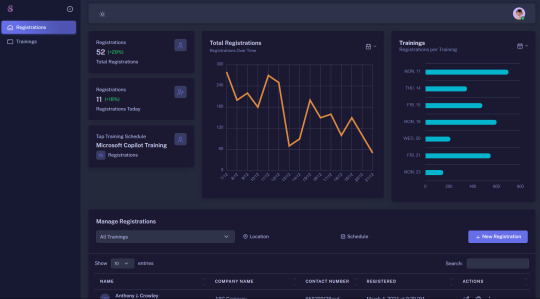#UI Development Training Online
Explore tagged Tumblr posts
Text
youtube
#online courses#coding#graphic designing#web design#ict skills#india#hindi#gujarati#english#www.ictskills.in#online training#live training#full stack course#digital marketing#ui ux design#backend#online#live courses#courses#education#computer science#engineering#java#python#php#dot net development company#spring mvc#javascript#Youtube
2 notes
·
View notes
Text

UI Development Interview Question and Answers
#ui development online training#UI Development online classes#UIDevelopmentOnlineTrainingInHyderabad
10 notes
·
View notes
Text
🎓 From Learner to Leader: Your Journey Starts Here!
The tech industry is evolving fast, and companies are constantly hunting for skilled Full Stack Developers who can handle both front-end and back-end with ease. Want to be one of them?
💻 Join our Placement Assistance Program in Full Stack JAVA & .NET and get ready to turn your passion into a profession.
📅 Start Date: 9th June 2025 🕚 Time: 11:00 AM IST 🏫 Mode: Online / Classroom 🔗 Register Now: https://tr.ee/7MlU6p
This isn’t just a course — it’s your launchpad. Learn:
✅ Core & Advanced Java ✅ .NET Framework & Technologies ✅ Frontend tools (HTML, CSS, JavaScript) ✅ Real-time projects with ReactJS and Node.js ✅ Interview prep, resume building & mock interviews

👨🏫 Taught by industry experts, this program is designed to guide freshers and career-switchers step-by-step, helping you gain the skills and confidence needed to ace interviews and thrive on the job.
💼 Placement Support? Absolutely! We walk with you till your offer letter is in hand. Your success is our goal.
🌟 Don't wait for opportunities. Create them.
🔍 Want to explore more career-focused courses? Visit: https://linktr.ee/ITcoursesFreeDemos
🧭 Let Naresh i Technologies be your guide to a brighter tech future. ✍️ Register Today and start building your dream career!
#java course#javaprogramming#coding#fullstackjava#learnfromhome#full stack training#full stack developer#online training#ui ux design#offline#placementassistance
0 notes
Text
The Importance of UI UX Design in Modern Web Development

UI/UX design is vital to modern web development. It defines how users will interact with the site. A good UI and UX let users easily navigate a site. It can search for info and enjoy a pleasing environment. In today’s internet world, UI/UX design decides a site’s stickiness. Studying at the best UI UX university can shape your career.
#UI UX course in Jaipur#web development#UI UX training in Jaipur#UI UX design#UI UX career#UI UX benefits#Online UI/UX Design Course in Jaipur#UI design#UI UX Design Process#Modern Web Development#UI UX university#MIT UI/UX design course
0 notes
Text
ui development training in online ameerpet hyderabad

APEC Provides Best Web Development Course in Various Fields of Education like for both IT and Non IT Students and Professionals .
visit:
#ui development training in online ameerpet hyderabad#ui development training institute in hyderabad
1 note
·
View note
Text
ui development training institute in hyderabad

APEC Provides Best Web Development Course in Various Fields of Education like for both IT and Non IT Students and Professionals .
visit:
#ui development training institute in hyderabad#ui development training in online ameerpet hyderabad
1 note
·
View note
Text
ui development training institute in hyderabad

Join with APEC web development training (online and classroom) and make REAL web applications using cutting-edge technologies. Learn how to write browser-based games, create complex HTML forms with validations, portfolio sites, landing pages etc.
visit:
#ui development training institute in hyderabad#ui development training in online ameerpet hyderabad
1 note
·
View note
Text
#software training institute#python coding#it courses#certification#courses#online courses#phpcourse#mysql#artificial intelligence#flutter mobile app development company#ui/ux design#website design#digital marketing#react native#django#live projects#industry standards#affordable fees#startup#coaching
0 notes
Text
Zelda Liveblogs a Lancet Paper

Following this post, I am now going to liveblog reading the Lancet paper cited by the Economist article to predict worldwide fertility to drop by 3/4s of its current position if current demographic trends continue. It is an Open Access article, so the entire thing is open for anyone on the internet to read.
Citation:
GBD 2021 Fertility and Forecasting Collaborators (March 20, 2024). Global fertility in 204 countries and territories, 1950–2021, with forecasts to 2100: a comprehensive demographic analysis for the Global Burden of Disease Study 2021. The Lancet, 403(10440), 2057-2099. https://doi.org/10.1016/S0140-6736(24)00550-6.
I refuse to use Chicago style. This is mostly because I memorized APA and don't want to learn a new one.
First, my background: I am not a demographer; I am not trained as a demographer; I have studied it auxiliarily to my other academic pursuits. I fall in a sort of educated in-between. I am currently a Master's student in library and information sciences, and my undergraduate degree was in political science, both at USAmerican universities. However, the field of economics is also very close to my heart, and I would have double-majored in it if the opportunity and financial costs had not been too high to justify it. During the five years I was a college drop-out, I studied economics independently, reading broadly within the field and taking non-certificate courses online. I've been taking non-certificate courses in economics through correspondence or online since I was about nine. I'm not an expert! I do, however, think I'm a fairly well-informed amateur.
And a note on language. This paper refers to birthing parents as mothers and to the demographic that gives birth interchangeably as female and women. I acknowledge that this is a cissexist patriarchical viewpoint that erases transmen, nonbinary and intersex people, and probably others I'm not thinking of. For consistency between my reflections and the paper and ease of reading, I will do the same. I'm conscious I'm part of the problem here, but don't see a way around it without making my bits harder to understand than they have to be.
With that out of the way, here we go:
Methodology (Summary)
This is where me not being a demographer is an important thing to know. I neither know nor normally care about the statistical methods used to determine demography, just that the demographers aren't retracting papers over it. However, I do know that in general the CCF50 (total cohort fertility before the age of 50) is a neater and more accurate measurement to build projections on than the TFR (total fertility rate by year) and that's the methodology the paper's authors went with. This is good and promising. TFR for known years and CCF50 projections sounds like a solid method. 👍
We additionally produced forecasts for multiple alternative scenarios in each location: the UN Sustainable Development Goal (SDG) for education is achieved by 2030; the contraceptive met need SDG is achieved by 2030; pro-natal policies are enacted to create supportive environments for those who give birth; and the previous three scenarios combined.
I'm very hopeful about these forecasts! They'll show a few different hopeful scenarios.
To evaluate the forecasting performance of our model and others, we computed skill values—a metric assessing gain in forecasting accuracy—by comparing predicted versus observed ASFRs from the past 15 years (2007–21). A positive skill metric indicates that the model being evaluated performs better than the baseline model (here, a simplified model holding 2007 values constant in the future), and a negative metric indicates that the evaluated model performs worse than baseline.
This is a very responsible thing for the authors to have done, and I am interested to see how this is reflected in the models.
.
Findings (Summary)
During the period from 1950 to 2021, global TFR more than halved, from 4·84 (95% UI 4·63–5·06) to 2·23 (2·09–2·38). Global annual livebirths peaked in 2016 at 142 million (95% UI 137–147), declining to 129 million (121–138) in 2021. Fertility rates declined in all countries and territories since 1950,
(Emphasis mine. The numbers in parentheses are the confidence interval.) I think this is the most important takeaway from the whole damn paper. Makes sense, since it's the first line of the findings. If you read nothing else, read these three sentences. Global birthrates are barely above replacement (which, if you recall from my other essay, is generally considered to be ~2.1). To me, this implies lot of problems that traditionally have been considered solvable with population redistribution (meaning, mostly, immigration) may not be solvable that way even if fertility were to stop declining today and hold constant for the rest of the century.
Future fertility rates were projected to continue to decline worldwide, reaching a global TFR of 1·83 (1·59–2·08) in 2050 and 1·59 (1·25–1·96) in 2100 under the reference scenario. The number of countries and territories with fertility rates remaining above replacement was forecast to be 49 (24·0%) in 2050 and only six (2·9%) in 2100, with three of these six countries included in the 2021 World Bank-defined low-income group, all located in the GBD super-region of sub-Saharan Africa.
Holy shit. I cannot emphasize enough how low a TFR of 1.59 is. This is approximately the current TFR of the United Kingdom, and they're beginning to freak out even though they have relatively easy sources of additional replacement recruitment through the Commonwealth. Imagine that for the whole Earth. With only six countries as a potential source of surplus population to be redistributed.
Funding from the Bill & Melinda Gates Foundation. Makes sense. This is the kind of thing that foundation funds.
.
Introduction
Low levels of fertility have the potential over time to result in inverted population pyramids with growing numbers of older people and declining working-age populations. These changes are likely to place increasing burdens on health care and social systems, transform labour and consumer markets, and alter patterns of resource use.
Oh man, I wish I'd gone through this paper earlier, I could have just quoted this bit and been done instead of trying to explain it from scratch! 😂
The UN Population Division estimates of past fertility are not compliant with the Guidelines on Accurate and Transparent Health Estimates Reporting (GATHER) statement in important respects; notably, they do not provide all code for statistical models or explicit details on criteria for exclusion or adjustment of primary data sources. Furthermore, the validity of UN Population Division projections has been questioned due to the assumptions applied in countries experiencing low post-transition fertility dropping below replacement level.
YES GO OFF 👏 The UN Population Division is so much more cagey about their data than the World Bank, it's so annoying, and they keep predicting increases that don't happen. I thought it was so weird as an undergrad but figured it was because of ~bureaucracy~ or privacy laws or whatever. It's nice to be vindicated [redacted] years later.
Our forecasts also suggest that, by 2100, the largest concentrations of livebirths will shift to low-income settings, particularly a subset of countries and territories in sub-Saharan Africa, which are among the most vulnerable to economic and environmental challenges. Extreme shifts in the global distribution of livebirths can be partially ameliorated by improved female education and met need for modern contraception. Outside of this subset of low-income areas, most of the world's countries will experience the repercussions of low fertility, with ageing populations, declining workforces, and inverted population pyramids, which are likely to lead to profound fiscal, economic, and social consequences. National policy makers and the global health community must plan to address these divided sets of demographic challenges emerging worldwide.
This is such an important point for them to make. Demography isn't a vacuum; it has significant real-world effects. By 2100, most babies born will be born in Africa, and we need to plan for that now. By 2100, most countries will not have enough workers, and we need to plan for that now. 2100 is not that far into the future. I, personally, will live to see the beginnings of the effects of this demographic shift, and I'm an adult who pays taxes and has a college degree and shit.
.
The Data Sources and Processing section is pretty standard and unremarkable. Good job.
.
Fertility Forecasting
We produced forecasts of fertility using an updated modelling framework (appendix 1 section 3) that improved on the methods in the 2020 study by Vollset and colleagues. In our updated methods, we used not only estimates of female educational attainment and contraceptive met need as covariates, but also estimates of under-5 mortality and population density in habitable areas to account for a larger variation in CCF50 across all countries in the sub-models (appendix 1 section 3.1, appendix 2 figure S2). Similar to Vollset and colleagues, we continued to forecast fertility with CCF50 rather than TFR, because modelling in cohort space is more stable than in period space.
Niiiiice. Covariates are things that, well, vary, alongside the thing you're trying to measure. For fertility, the most obvious one might be age of the mother at first birth; if someone is 16 at first birth, she probably will have more kids than someone who is 30 at first birth, for example. This model also includes how much schooling the mother gets, whether she has contraception, the mortality rate (that is, how many of them die) of children under five, and population density! That's a lot of statistical crunching and their model will be more precise for it. Precise isn't the same as accurate, but I think that with the variables they selected, they will travel in the same direction.

What a pretty equation. I don't understand it, but it's got a certain je ne sais quois.
For the education SDG scenario, the forecasts assume that by 2030, all people will have 12 years or more of education by the age of 25 years and then maintains the same rate of change as the reference scenario up to 2100. For the contraceptive met need scenario, to reflect the SDG scenario of universal access, the forecasts assumed a linear increase in contraceptive coverage to reach 100% by 2030 and then stay constant up to 2100.
I love how optimistic these scenarios are 😂 This truly is the best-case scenario for both the education forecast and the contraceptive forecast! I do hope everybody has 12+ years of education and 100% contraceptive coverage by 2030. Make it happen, António!!!!
(Joke explained: António Guterres is the current Secretary-General of the United Nations, and these goals are absolutely not going to be met by 2030.)
In the pro-natal scenario, we assumed a country will introduce pro-natal policies, such as childcare subsidies, extended parental leave, insurance coverage expansion for infertility treatment, 33 and other forms of support for parents to afford high-quality child-care services, once TFR decreases to less than 1·75. We then made three assumptions on the effects of such policies. First, we assumed the full effect of pro-natal policies will be to increase TFR by 0·2. Second, it will take 5 years after the policy is introduced for the full increase in TFR to occur, and TFR will rise linearly over that time span. Last, we assumed that both the policies and the increase in TFR by 0·2 will endure for the remainder of the century.
The pro-natal scenario is also incredibly optimistic. This kind of response simply hasn't happened in any country that's tried pro-natal policies as envisioned by the authors (my reference cases, just off the top of my head: Japan and France).
The optimism makes sense. They represent extreme cases, in order to contrast possible outcomes versus the reference case. This is good practice! It's just also funny.
.
Results
The Reference Case
I hate the embedded tables. They have the confidence interval in the same cell as the estimate. How very dare they, that's incredibly inconvenient for me personally.
The chart in Figure 1, however, I think speaks volumes:

It speaks so many volumes that I'm gonna go up and put it above the cut, brb. This chart shows the reference case; that is, it shows the fertility rate if the fertility trends of 1950-2021 continue into the future.
At the national level, estimates of TFR in 2021 ranged from 0·82 (95% UI 0·75–0·89) in South Korea to 6·99 (6·75–7·24) in Chad, with below-replacement levels of fertility (TFR <2·1) in 110 of 204 countries and territories (table 1, figures 2A, 3).
I think this range is neat and goes to show that while the trend is world-wide, it's still not even. Chadian women still give birth to about 7ish kids on average. That's more than 3x replacement, and more than 8.5x the average fertility of South Korea. South Korea is going to have different problems than Chad; Chad probably doesn't have to worry as much about their workforce being unable to sustain a large elderly population. (Don't look so cheerful about it. They've got lots of other stuff to worry about. 😬)


These charts are fascinating to look at to me. I think this really showcases just how dramatic the projected decline is. It's not just the Europe, it's not just wealthy post-industrialized countries, but everywhere. It's in Eswanti, it's in Indonesia, it's in Burkina Faso, it's in China. It really shows just how much Chad is an outlier (adn should still be counted, btw, just because it's an outlier doesn't mean we should discard it; it's dependent on study structure and you can't just throw out entire countries because they have high birth rates on a study of birth rates).
Our estimates indicate that there is approximately a 30-year gap between the time when TFR falls below 2·1 and when the natural rate of population increase turns negative. We forecast that 155 (76·0%) countries and territories will have fertility rates below replacement level in 2050; by 2100, we project this number will increase to 198 (97·1%), with 178 (87·3%) having a negative natural rate of increase (figure 3).
A 30-year gap sounds reasonable. That's about how long it takes for people to have/not have kids, and for their own parents to potentially die, in about equalish numbers (on a global scale, anyway). I do think this gap number is likely to increase as healthcare improves in places that are worse today and as fertility technology increases the age at which people can become pregnant, but 30 is a perfectly respectable number with actual statistical backing.
Alternative scenario fertility forecasts
This is the part I'm really excited about!!!
The first scenario, which assumes meeting the SDG education target by 2030, is estimated to result in global TFRs of 1·65 (95% UI 1·40–1·92) in 2050 and 1·56 (1·26–1·92) in 2100 (table 2). The second scenario, which assumes meeting the SDG contraceptive met need target by 2030, will produce global TFRs of 1·64 (1·39–1·89) in 2050 and 1·52 (1·21–1·87) in 2100. The third scenario, which incorporates pro-natal policy implementation, is forecast to yield global TFRs of 1·93 (1·69–2·19) in 2050 and 1·68 (1·36–2·04) in 2100. The combined scenario, in which all three other alternative scenarios are applied, is projected to result in a global TFR of 1·65 (1·40–1·92) in 2050 and 1·62 (1·35–1·95) in 2100.
So recall the reference scenario projections: 1·83 (1·59–2·08) in 2050 and 1·59 (1·25–1·96) in 2100.
I find it interesting that all cases are so incredibly close to reference, with overlapping confidence intervals. Functionally, there's not a lot of difference between a TFR of 1.68 and 1.52. They're both still well below replacement. It's about the difference between Sweden (1.67) and Russia (1.51). Russia, you may have noticed, is waging war about it.*
*This is not a stated goal of the Russian Federation in the Ukraine War. This is me personally making an assertion that the shifting demographics of the Russian population, including the below-replacement birthrate beginning to put pressure on their lacking social safety networks, has contributed to the many complicated and interconnected reasons why the Russian Federation invaded Ukraine, but please do not take me to be the final authority on the matter or interpret this statement as implying that demography of all things is the sole or primary reason for the war.
Discussion
The aforementioned changes in fertility over the coming century will have profound effects on populations, economies, geopolitics, food security, health, and the environment, with a clear demographic divide between the impacts on many middle-to-high-income locations versus many low-income locations. For nearly all countries and territories outside of sub-Saharan Africa, sustained low fertility will produce a contracting population with fewer young people relative to older people before the end of the 21st century. These changes in age structure are likely to present considerable economic challenges caused by a growing dependency ratio of older to working-age population and a shrinking labour force. 42 Unless governments identify unforeseen innovations or funding sources that address the challenges of population ageing, this demographic shift will put increasing pressure on national health insurance, social security programmes, and health-care infrastructure. These same programmes will receive less funding as working-age, tax-paying populations decline, further exacerbating the problem.
This is why the Economist article talks about birthrates the way it does. It's not about white babies or whatever people in the notes are sarcastically ascribing to an article they haven't read. It's about the whole world. There are 150 countries outside of the Sub-Saharan Africa region, and 44 of the 46 countries within Sub-Saharan Africa are projected to feel the many or all of the same effects as well.
It's about the way social security nets are structured and how they're going to fail. It's about the way that elderly people are going to be treated by our societies. It's about me, and it's about you, and it's about making sure that there are enough humans to take care of the other humans that need taking care of.
If we don't increase global fertility rates above replacement, which it increasingly looks like we won't, we need other solutions. The fertility one is easy fuckin' pickings compared to a complete overhaul of society, and you saw how little difference it actually makes. So did the authors:
To date, one strategy to reverse declining fertility in low-fertility settings has been to implement pro-natal policies, such as child-related cash transfers and tax incentives, childcare subsidies, extended parental leave, re-employment rights, and other forms of support for parents to care and pay for their children.49, 50 Yet there are few data to show that such policies have led to strong, sustained rebounds in fertility, with empirical evidence suggesting an effect size of no more than 0·2 additional livebirths per female. [...] Moreover, although pro-natal policies primarily aim to increase births, they also offer additional benefits to society, including better quality of life, greater household gender equality (ie, more equal division of household labour),53 higher rates of female labour force participation,54 lower child-care costs,55 and better maternal health outcomes,56 depending on policy design and contextual factors. In the future, it will be beneficial to perform an in-depth analysis on varying impacts of pro-natal policies in selected countries that have a meaningful impact on population. [...] Importantly, low fertility rates and the modest effects that pro-natal policies might have on them should not be used to justify more draconian measures that limit reproductive rights, such as restricting access to modern contraceptives or abortions.
I just want to highlight that the study authors explicitly argue for certain pro-natal policies that increase quality of life and caution against pro-natal policies that limit rights. These people aren't heartless.
They also discuss at some length the implications of the changing distribution of live births, where by the end of the century most live births will take place in the poorest nations, which are also the ones that will be hardest-hit by climate change. These nations already face famines, military rule, civil wars, terrorism, and climate changed-caused severe heatwaves, droughts, and floods. They advise politicians to take this into account when making policy decisions but don't go into what policy decisions should be made, which is wise since they're demographers and not political scientists, but disappointed me, the political scientist reading the demography paper and hoping to find something to criticize.
.
.
My takeaway:
Incredibly interesting paper. As a non-demographer, I think it's very convincing and hope that it sparks a serious conversation about the paths we need to take forward, in our own countries and as a global community. I especially hope that it inspires us to take bold action to drastically change our systems of elder care, which are already being pushed to the limit and will simply break under pressure if fertility rates continue to fall.
17 notes
·
View notes
Text
Inazuma Eleven: Victory Road Worldwide Beta Test Demo for PS5, PS4, and PC launches July 18 - Gematsu

The Inazuma Eleven: Victory Road Worldwide Beta Test Demo will launch for PlayStation 5, PlayStation 4, and PC via Steam on July 18 at 4:00 a.m. PT / 7:00 a.m. ET, developer LEVEL-5 announced.
The demo launched first for Switch on March 28 and ended distribution on June 28.
The Worldwide Beta Test Demo includes the following contents:
Single-Player Matches – Team Selection / Difficulty Selection
Online Competition – Random Matches / Private Matches / Team Selection / Character Progression / Save Function (no transfer to the main game)
Story Mode – Chapter 1 / Save Function Available (no carryover to the main game and no cross-save support)
Supported languages include English, Japanese, Traditional Chinese, Simplified Chinese, French, Italian, German, Spanish, and Brazilian Portuguese.
The PlayStation and PC release of the demo also comes with the following updates:
Adjustments for the PlayStation 5, PlayStation 4, and Steam Versions
4K support, HDR support, high frame rate support, and more.
ON / OFF setting for HQ Mode.
Changes to the title screen for certain platforms.
Additional Storyline and Gameplay Features
You will be able to experience the continuation of the main story, picking up from where Briar / Sakurazaki kicks the football.
As a new feature, the Football Chest gimmick will change based on your story progression.
Parameters Updated to the Final Release Version’s Specifications
The Training Gauge, initially planned for the final release version, will be implemented in this update ahead of time.
Improvements to Focus Squabbles
Pressing the L2 button during combat will bring up icons showing the enemies’ Rock Paper Scissors hands.
Additionally, this display will remain on the screen for a short period of time after releasing the button.
The Recovery button will flash when you’re in a pinch.
Tutorials have been added to better explain the Rock Paper Scissors and Recovery features.
The player’s cooldowns have been decreased, effectively speeding up the pace of combat.
Implementation of Training Effects
To increase motivation for Focus Squabbles, “Training Effects” originally intended to appear partway through the story will now be displayed at the start of combat.
Gradual Changes in the Focus Squabble System
With the addition of new story content, you will experience the Focus Squabble System evolving to resemble football more closely as the story progresses.
Cats Are Pettable
You will be able to pet cats. By doing so, you may gain an increase in Training parameters or obtain items.
Improvements to Football Chests
An arrow indicating the direction of the kick has been implemented for more accurate aiming.
Items dropped from Football Chests can be picked up from a more forgiving distance.
Addition of Equipment and Outfits
You will be able to obtain equipment usable in Story Mode.
You can customize the appearance of your character by equipping different outfits.
Camera Sensitivity Settings
The default camera sensitivity will be slightly increased, and the speed can be adjusted in the Options.
Improvements to the Map
A full-screen map display for close-up areas will be added.
An option to rotate the Minimap will be added, and can be turned ON/OFF in the Options.
Adjustments to the Quest Marker
The sorting priority of the UI above characters will be improved.
A marker for quest items will be displayed onscreen.
Other Bugs and UI Changes
Minor bugs and UI changes will also be addressed.
Visit the official website for the Worldwide Beta Test Demo here.
Inazuma Eleven: Victory Road is due out for PlayStation 5, PlayStation 4, Switch, PC via Steam, iOS, and Android in 2024.
Watch a new trailer below.
Trailer #6
English
youtube
Japanese
youtube
Traditional Chinese
youtube
Simplified Chinese
youtube
15 notes
·
View notes
Text
VFX Era: Your Future Begins with Graphic Designing Course in Kanpur

VFX Era is redefining creative education in Uttar Pradesh through its comprehensive graphic designing course in Kanpur. Combining artistic training with career-readiness, this course equips learners with both the vision and the tools to become successful design professionals. Whether you're a recent school graduate or a mid-career switcher, VFX Era has built a design ecosystem that blends theory, practice, and professional mentorship.
What makes VFX Era unique is its complete learning cycle. From learning tools like Adobe Photoshop and Illustrator to understanding brand identity, visual storytelling, and user interface design, students are nurtured into becoming designers who solve real-world problems.
Why VFX Era's Graphic Designing Course in Kanpur Is the Ideal Starting Point
The growing demand for visual content across industries has created a need for trained graphic designers who are not just tool-users but thinkers and creators. VFX Era’s graphic designing course in Kanpur is designed to meet this demand with a practical, future-focused approach. Here, you don’t just learn how to use design software — you learn how to build brands, shape user experiences, and communicate visually.
From logos and brochures to social media content and website layouts, students work on real-time projects that mirror the needs of businesses today. This course doesn’t just prepare you to enter the industry—it prepares you to stand out in it.
The VFX Era Learning Philosophy: Creative, Practical, Professional
At the core of VFX Era’s teaching model is a blend of hands-on practice and conceptual clarity. The course aims to empower students with skills that are instantly applicable in the job market:
Understanding how design solves business problems
Translating ideas into visual campaigns
Creating cross-platform consistency for brand visuals
The course also introduces students to design systems and workflows that are used by professionals in advertising agencies, startups, eCommerce platforms, and global brands.
Course Structure: From Fundamentals to Industry-Level Mastery
Here’s a breakdown of what the curriculum covers:
Design Principles: Color theory, visual hierarchy, composition
Image Editing: Retouching and visual manipulation using Adobe Photoshop
Vector Graphics: Logo and icon creation using Illustrator and CorelDRAW
Typography: The art of readable and brand-oriented text design
Layout and Publishing: Flyers, posters, banners, and social media creatives
UI/UX Basics: Designing for websites and mobile apps
Brand Identity Projects: Packaging, logo kits, visual guidelines
In addition to these, students also receive special training in:
Freelancing and client handling
Building an online design portfolio
Content design for social media platforms
Basics of animation and motion graphics
Project-Based Learning at VFX Era
Every module is accompanied by a project. This means by the end of the course, each student has an impressive portfolio that includes:
Company logos
Product packaging
Event banners
Ad creatives
Website UI samples
Infographics and visual resumes
Students also receive reviews on their projects, just like in real agency settings. These critiques from mentors help learners understand what employers and clients expect.
Career Pathways After a Graphic Designing Course in Kanpur
The beauty of a graphic designing career is its versatility. After completing this course, you can work in:
Digital Marketing Agencies
Media and News Companies
Corporate Design Teams
Freelance Marketplaces
Startups and E-commerce Brands
You can also specialize in:
Branding Design
Social Media Content
Web Graphics
Packaging Design
Presentation & Pitch Deck Design
And if you want to scale further, combining your design skills with digital marketing or front-end development knowledge creates a competitive profile for roles like UI Designer or Digital Content Strategist.
The Role of Mentors in Your Creative Growth
Unlike self-paced online tutorials, the VFX Era experience is guided by mentors. These are industry professionals who:
Review your design drafts
Provide actionable feedback
Teach shortcuts and design hacks
Guide you on pricing, pitching, and professionalism
This mentorship accelerates learning, builds confidence, and prepares students for freelance gigs or full-time jobs.
The Power of Design in Kanpur’s Business Ecosystem
Kanpur is no longer just an industrial city. With the digital boom, local businesses are investing in branding, social presence, and customer engagement. From cafés and real estate firms to coaching centers and eCommerce brands, every business needs visual design.
As a certified designer from VFX Era, you can help these brands:
Build recognition through visual identity
Enhance online reach through engaging content
Improve customer retention through consistent visuals
And the best part? You can do all this while working from home or even as a part-time freelancer.
Expand Your Horizons: Combine Graphic Designing with Digital Marketing & Web Development
VFX Era doesn’t just stop at design. For students who want to expand their skillset, the institute also offers:
A full-fledged digital marketing course in Kanpur, where students learn SEO, PPC, email campaigns, and influencer marketing.
A practical web development course in Kanpur, covering HTML, CSS, JavaScript, and responsive design to build fast, beautiful websites.
By learning how your designs can integrate with marketing and web technologies, you’ll stand out as a full-stack creative professional.
Portfolio Building and Career Support
The course ends with a powerful capstone project and a complete review of the student’s portfolio. But VFX Era goes a step further by helping students:
Create Behance and Dribbble profiles
Draft a winning freelance pitch
Appear for mock interviews and client meetings
Build a design CV and pitch deck
Get referrals to freelance clients and agencies
This comprehensive support ensures you don’t just complete a course—you start a new career.
Final Thoughts: Why VFX Era Is the Top Choice for Graphic Designing Course in Kanpur
There are many ways to learn graphic design, but only VFX Era combines:
Experienced mentors
Real-world projects
Personalized feedback
Industry connections
Career-focused curriculum
That’s why it has become the most trusted name for anyone looking to become a designer in Kanpur.
Address: 117/H1/368 Pandu Nagar Neer Cheer Chauraha, Pandu Nagar, Kakadeo, Kanpur, Uttar Pradesh 208005 Contact: 063904 67467 Website: https://vfxera.com
If you’ve ever wanted to build a creative career, launch your own brand, or work in design globally — your journey starts here. Join the graphic designing course in Kanpur at VFX Era and unlock your true creative potential.
2 notes
·
View notes
Text

ICT Skills | An Online Live IT Training
ICT skills gives Live Online IT Training with job-oriented computer courses in India, We provide online programming certificate courses like Python, Java, Kotlin, C language, C plus plus, We serve online live full-stack Web Development Project Training programme such as Full stack framework based training with Django, Laravel, WordPress, PHP, Java, Node js, React JS, Mongo DB, Express js and as per student requirement, We (ictskills.in) give training on various field like online live UI-UX Design, Digital Marketing, Graphic Design, Web Design with essential tools HTML, CSS, SASS, Photoshop, illustrator, Canva, Figma, Indesign, Javascript with ES6, CorelDraw, Publisher, ICT gives live classes for basic to advanced skills in Word, Excel, Powerpoint, English, Hindi, Gujarati typing and as per school or college computer subject syllabus training in INDIA and World-Wide, We are teaching with Gujarati, Hindi, English language.
ICT Skills delivered training by a live instructor, in real-time. Virtually is training the student receives or accesses over the internet rather than being physically in the classroom with the instructor, We give Government authorized certificate to student. We conducted IT courses via the Internet. We are generally conducted through a learning management system, in which students can view their course syllabus and interact with instructor.
Enroll for Best Online IT Training | ICT Skills India
Contact Details: Ahmedabad, India Call: 09499569596 E-mail: [email protected] Website: www.ictskills.in Instagram Id: @oneictskills
#ictskillsin #oneictskills #ictskills #ict #institute #computer #ittraining #courses #india #ahmedabad #gujarati #hindi #english #liveclass #class #onlineclasses #stayhome #onlineclass #cbseclass #live #onlinecoaching #engineering #cbse #icse #designing #school #college #professional #ictweb #ict_ahmedabad
#computer science#online classes#hindi#liveclass#it training institute#coding#marketing#software training institute#career development#India#online#oneictskills#ict skills
3 notes
·
View notes
Text
Dota 2 (2013)















Date: July 9, 2013 Platform: Mac / PC / Linux Developer: Valve Corporation Publisher: Valve Corporation / Nexon Corporation / Perfect World Entertainment Genre: MOBA Theme: Fantasy Franchises: Dota Also known as: Defense of the Ancients 2 Type: Crossover
Summary:
Dota 2 is a free-to-play high fantasy action real-time strategy game developed and released digitally by Valve for the PC, Mac and Linux on July 9, 2013.
Built on the studio's Source engine, Dota 2 is the official sequel to Defense of the Ancients, a series of custom scenarios for the 2002 game Warcraft III: Reign of Chaos that originally popularized the "Multiplayer Online Battle Arena" sub-genre. Development of the game is led by the original mod's final lead designer, IceFrog.
Similar to the original mod, the main gameplay pits two five-player teams (the Radiant and the Dire) against each-other as they work to escort their three endless waves of AI-controlled monsters (or "creeps") to the fortified enemy base in order to destroy the enemy "Ancient". Each player controls an individual Hero character and, throughout the match, earn experience (to level up their stats and abilities) and gold (for purchasing items and equipment) by eliminating enemies.
Rather than using a weekly free-to-play character rotation system (similar to other MOBA games at the time, namely League of Legends), the game makes all characters playable from the start and features cosmetic microtransactions (such as alternate appearances for each Hero's armor and weapons, alternate announcers, and custom UI enhancements) using the Steam Inventory and Steam Market systems.
The game received numerous updates since its original release, adding new Heroes, game modes (including support for custom modes), and features while revising certain gameplay mechanics. New features include better support for both new players (with integrated community-made guide support, coaching, and improved training modes) and competitive players (with improved replay and spectator support), as well as VR headset support (for spectating and viewing cosmetics). It also received a reworked client update in June 2015 (named "Dota 2 Reborn" for a short time), porting the game to Valve's Source 2 engine (the first game released with it), and received a complete map revamp on April 2023.
Dota 2 originally received an invite-only beta in November 2011, during Gamescom 2011. It was formally launched July 9, 2013, but access was gated via a queue system until December 16, 2013. It was also distributed as a standalone game in some regions, with Perfect World publishing the game in China, and Nexon publishing the game in both Japan and South Korea. The game also received spin-offs, including the 2018 digital card game Artifact, the 2020 "auto-battler" game Dota Underlords, and the 2021 animated series Dota: Dragon's Blood.
Source: https://www.giantbomb.com/dota-2/3030-32887/
Link: https://www.youtube.com/watch?v=LqtkfCLjJz4&ab_channel=DotaCinema
#Dota 2#Defense of the Ancients 2#jttw media#game#video game#crossover#sun wukong cameo#sun wukong#six eared macaque#liuer mihou cameo#six eared macaque camero#zhu bajie
22 notes
·
View notes
Text
ui development training in online ameerpet hyderabad

You want to create an application from scratch using web technologies?
Join with APEC web development training (online and classroom) and make REAL web applications using cutting-edge technologies. Learn how to write browser-based games, create complex HTML forms with validations, portfolio sites, landing pages etc.
visit: https://www.apectraining.com/web-development/
#ui development training in online ameerpet hyderabad#web development training in hyderabad ameerpet
0 notes
Text
How-To IT
Topic: Core areas of IT
1. Hardware
• Computers (Desktops, Laptops, Workstations)
• Servers and Data Centers
• Networking Devices (Routers, Switches, Modems)
• Storage Devices (HDDs, SSDs, NAS)
• Peripheral Devices (Printers, Scanners, Monitors)
2. Software
• Operating Systems (Windows, Linux, macOS)
• Application Software (Office Suites, ERP, CRM)
• Development Software (IDEs, Code Libraries, APIs)
• Middleware (Integration Tools)
• Security Software (Antivirus, Firewalls, SIEM)
3. Networking and Telecommunications
• LAN/WAN Infrastructure
• Wireless Networking (Wi-Fi, 5G)
• VPNs (Virtual Private Networks)
• Communication Systems (VoIP, Email Servers)
• Internet Services
4. Data Management
• Databases (SQL, NoSQL)
• Data Warehousing
• Big Data Technologies (Hadoop, Spark)
• Backup and Recovery Systems
• Data Integration Tools
5. Cybersecurity
• Network Security
• Endpoint Protection
• Identity and Access Management (IAM)
• Threat Detection and Incident Response
• Encryption and Data Privacy
6. Software Development
• Front-End Development (UI/UX Design)
• Back-End Development
• DevOps and CI/CD Pipelines
• Mobile App Development
• Cloud-Native Development
7. Cloud Computing
• Infrastructure as a Service (IaaS)
• Platform as a Service (PaaS)
• Software as a Service (SaaS)
• Serverless Computing
• Cloud Storage and Management
8. IT Support and Services
• Help Desk Support
• IT Service Management (ITSM)
• System Administration
• Hardware and Software Troubleshooting
• End-User Training
9. Artificial Intelligence and Machine Learning
• AI Algorithms and Frameworks
• Natural Language Processing (NLP)
• Computer Vision
• Robotics
• Predictive Analytics
10. Business Intelligence and Analytics
• Reporting Tools (Tableau, Power BI)
• Data Visualization
• Business Analytics Platforms
• Predictive Modeling
11. Internet of Things (IoT)
• IoT Devices and Sensors
• IoT Platforms
• Edge Computing
• Smart Systems (Homes, Cities, Vehicles)
12. Enterprise Systems
• Enterprise Resource Planning (ERP)
• Customer Relationship Management (CRM)
• Human Resource Management Systems (HRMS)
• Supply Chain Management Systems
13. IT Governance and Compliance
• ITIL (Information Technology Infrastructure Library)
• COBIT (Control Objectives for Information Technologies)
• ISO/IEC Standards
• Regulatory Compliance (GDPR, HIPAA, SOX)
14. Emerging Technologies
• Blockchain
• Quantum Computing
• Augmented Reality (AR) and Virtual Reality (VR)
• 3D Printing
• Digital Twins
15. IT Project Management
• Agile, Scrum, and Kanban
• Waterfall Methodology
• Resource Allocation
• Risk Management
16. IT Infrastructure
• Data Centers
• Virtualization (VMware, Hyper-V)
• Disaster Recovery Planning
• Load Balancing
17. IT Education and Certifications
• Vendor Certifications (Microsoft, Cisco, AWS)
• Training and Development Programs
• Online Learning Platforms
18. IT Operations and Monitoring
• Performance Monitoring (APM, Network Monitoring)
• IT Asset Management
• Event and Incident Management
19. Software Testing
• Manual Testing: Human testers evaluate software by executing test cases without using automation tools.
• Automated Testing: Use of testing tools (e.g., Selenium, JUnit) to run automated scripts and check software behavior.
• Functional Testing: Validating that the software performs its intended functions.
• Non-Functional Testing: Assessing non-functional aspects such as performance, usability, and security.
• Unit Testing: Testing individual components or units of code for correctness.
• Integration Testing: Ensuring that different modules or systems work together as expected.
• System Testing: Verifying the complete software system’s behavior against requirements.
• Acceptance Testing: Conducting tests to confirm that the software meets business requirements (including UAT - User Acceptance Testing).
• Regression Testing: Ensuring that new changes or features do not negatively affect existing functionalities.
• Performance Testing: Testing software performance under various conditions (load, stress, scalability).
• Security Testing: Identifying vulnerabilities and assessing the software’s ability to protect data.
• Compatibility Testing: Ensuring the software works on different operating systems, browsers, or devices.
• Continuous Testing: Integrating testing into the development lifecycle to provide quick feedback and minimize bugs.
• Test Automation Frameworks: Tools and structures used to automate testing processes (e.g., TestNG, Appium).
19. VoIP (Voice over IP)
VoIP Protocols & Standards
• SIP (Session Initiation Protocol)
• H.323
• RTP (Real-Time Transport Protocol)
• MGCP (Media Gateway Control Protocol)
VoIP Hardware
• IP Phones (Desk Phones, Mobile Clients)
• VoIP Gateways
• Analog Telephone Adapters (ATAs)
• VoIP Servers
• Network Switches/ Routers for VoIP
VoIP Software
• Softphones (e.g., Zoiper, X-Lite)
• PBX (Private Branch Exchange) Systems
• VoIP Management Software
• Call Center Solutions (e.g., Asterisk, 3CX)
VoIP Network Infrastructure
• Quality of Service (QoS) Configuration
• VPNs (Virtual Private Networks) for VoIP
• VoIP Traffic Shaping & Bandwidth Management
• Firewall and Security Configurations for VoIP
• Network Monitoring & Optimization Tools
VoIP Security
• Encryption (SRTP, TLS)
• Authentication and Authorization
• Firewall & Intrusion Detection Systems
• VoIP Fraud DetectionVoIP Providers
• Hosted VoIP Services (e.g., RingCentral, Vonage)
• SIP Trunking Providers
• PBX Hosting & Managed Services
VoIP Quality and Testing
• Call Quality Monitoring
• Latency, Jitter, and Packet Loss Testing
• VoIP Performance Metrics and Reporting Tools
• User Acceptance Testing (UAT) for VoIP Systems
Integration with Other Systems
• CRM Integration (e.g., Salesforce with VoIP)
• Unified Communications (UC) Solutions
• Contact Center Integration
• Email, Chat, and Video Communication Integration
2 notes
·
View notes
Text
2024.03.07
the year so far 🫧
JANUARY 🍑
passed my senior thesis project! super happy with how it turned out

studied angular 2 and tailwind css
made my personal portfolio using angular and tailwind css <3 (still too busy to finish it though)

FEBRUARY 🥭
started an internship!!
got a free datacamp scholarship
learned qa automation using selenium
learned mochajs
learned sharepoint web development
learned node.js
developed a customer training registration system from scratch using node.js, sharepoint online, and bootstrap in two weeks!


now i'm confused about what i really want to pursue as a career because i've been jumping from project to project, and language to language. i still enjoy ui/ux design and front-end development, but i also like back-end now! full-stack is really overwhelming and stressful but satisfying. i'm interested in automated testing too. i also like managing projects. so idk what i want right now but so far i've liked learning and experiencing everything!! aaaaaaaaaa
11 notes
·
View notes